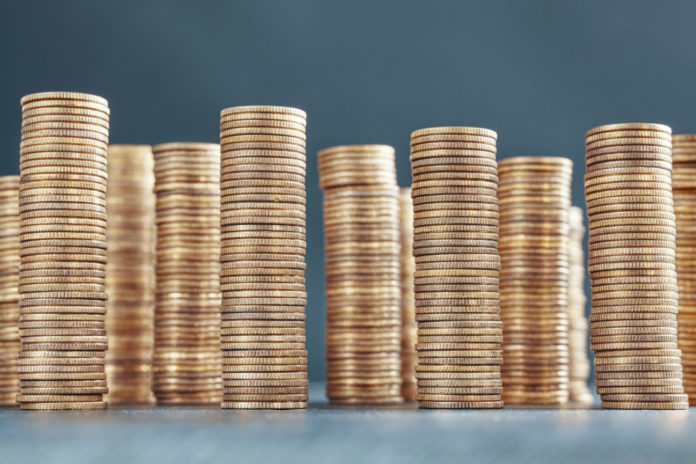Just when the Trump – Hillary tussle was getting interestingly intensified with Donald Trump unexpectedly taking a significant lead. The Trump naysayers renegotiated their views. The charismatic voice of our Honorable Prime Minister Mr Narendra Modi echoed across all News Channels and declared the proclamation here below. He stated that new Rs 500 and Rs 2000 bills will be introduced from 10th Nov 2016.
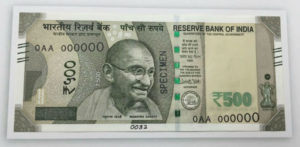
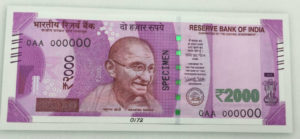
“Brothers and Sisters, to break the grip of corruption and black money, we have decided that the five hundred rupee and thousand rupee currency notes presently in use will no longer be legal tender from midnight tonight.”
This caused knee-jerk reactions across the country – people were rushing to ATM centres to withdraw currencies of lower denominations, and long serpentine queues were reported from a lot of Towns and Cities. Most of the ATMs ran out of money the very same night. Banks shut, ATMs could not yield cash and two of the most used denominations turned void- liquidity, they took a severe beating the next day.
Why was such action taken on so short notice?
Let’s try to understand the reasoning behind this urgent and momentous announcement. We were given just four hours to deal with our Rs 500 and Rs 1000 currency notes, ironically this was an impeccably planned and flawlessly executed decision.
Reportedly, the core team was working on this for more than two months. As bolstered by
This decision is a three combined reply to Black Money, Corruption and Terrorism. It’s a widespread understanding that Corruption and Black Money are correlated.
Let’s put Terrorism in a perspective. As per intelligence sources, Pakistan’s ISI has been printing and infusing truckloads of counterfeit Indian currency for quite some time now. The same blood money is also used to sponsor terrorism in India. So with this quick move, they’re left with tons of valueless paper.
In Mr Modi’s words:
“There is a need for a decisive war against the menace of corruption, black money and terrorism. Corruption, black money and terrorism are festering wounds which make the country hollow from within.”
How to Replace old Currency Notes?
Now that we have a perspective on the intent behind this decision, let’s delve into the modus operandi on the transition. We’ve been given 50 days – until 30th Dec 2016 – to deal with our old Rs 500 and Rs 1000 currency notes.
The only actual challenge, together these constitute more than 85% of the value of the total currencies out in circulation in Banks and ATMs. In value terms, Rs 500 and Rs 1000 notes account together for Rs 14.2 lakh crore, which is 86.4 percent of the total as of 31st March 2016. This is an increase from Rs 10.8 lakh crore (84.1 percent) in fiscal 2014.
For the replacement of the old currency bills, the cap has been put at Rs 4000 per person per day. This means one person can get new bills of not more than Rs 4000 instead of surrendering old bills per day after showing any acceptable identification like PAN Card, Aadhar Card, Voter ID etc.
Although, there’s no cap or limit on depositing the amount in our accounts by visiting the Bank or through the Cash Deposit Machines. If owing to some unavoidable reason, one couldn’t replace or collect the old currency bills on or before 30th Dec 2016; you’ll be able to do so till 31st March 2017 at designated RBI assigned centres after filling the declaration form.
For Non Residents who are abroad but still have old currency notes back in India, there is the option to authorise someone to do it on your behalf. The person can visit the branch with the authority letter and his/ her identification. The same could be done in NRO accounts as well.
What are the Restrictions on ATM withdrawals?
Restrictions have also be set for ATM withdrawals once the machines are recalibrated and operational. Maximum of Rs 2000 per card per day per card can be withdrawn until 18th Nov 2016. From 19th Nov, the limit can be revised to Rs 4000.
Using a cheque or a withdrawal slip, one can draw a maximum of Rs 10,000 per day with an overall limit of Rs 20,000 per week (both ATM and cheque withdrawals combined) for the first fortnight, that is, until the 24th Nov 2016.
There are no restrictions on cheque issuance, DD, NEFT, RTGS, IMPS and online payments.
Exceptions:
Hospitals, Air Tickets, Indian Railway Tickets and Government Bus Tickets have been exempted proactively till 11th Nov 2016 – they will still accept old bills. Highway Toll Booths have also been exempted reactively after long traffic snarls on few highways.
Utility bills, taxes and associated penalties can even be paid using old statements. “Old 500, 1000 notes are to be accepted for payments of fees, charges, taxes, penalty to central and state governments, including municipalities and local bodies” tweeted Economic Affairs Secretary Shaktikanta Das.
Impact of this Decision on The Common Man
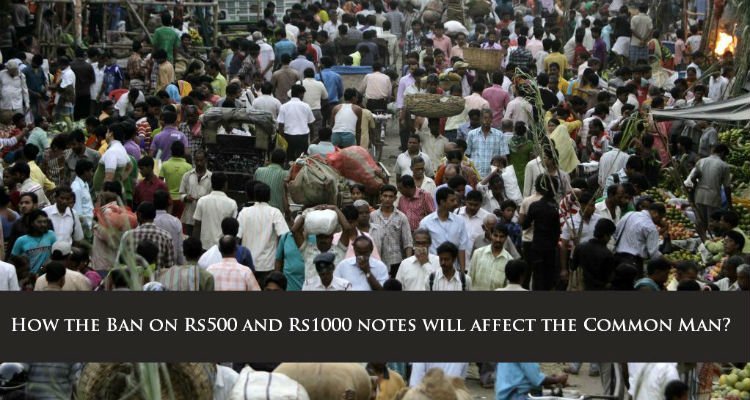
For everyday people, this decision will translate to deflation in short-term, followed by inflation in the medium to long-term, which will almost even out. Let me explain. Rs 500 and Rs 1000 bills together comprise a significant proportion of total liquidity.
Since most of the cash has been deemed null and will take time to rise as deposits and conversions gradually occur, it will result in deflation on a short term. This also translates into phenomenal bank deposits which imply easy credit or loan availability.
In a medium to a long time, this will trigger mild inflation which will cancel out the initial deflation.
Impact of this Decision on Real Estate

Real estate does not have a benchmark index. Ergo, the prices are determined solely by demand and supply. It’s common knowledge that most of the real estate transactions include cash component in form of unaccounted money.
Though this landmark decision will have varying degrees of impact on most of the sectors in my humble opinion, Real Estate will be most affected and for good in the long term. The already ailing sector will see modest price correction in short to medium term before consolidating in the long term.
Land prices will invariably fall which comprise the major proportion of development cost. Once the Bank deposits swell and loans are easily available, demand will surge again and the sector will revive. “This is a transformational reform by the Modi government. Real estate transactions in progress and not completed that involve cash will be impacted, leading to complications. This will certainly lead to pain in the realty sector in the short term, but it is a welcome move for the long run” said Ravi Ahuja, Executive Director, Office Services & Investment Sales at Colliers International.
Impact of this Decision on Gold Market

An astonishing 70-75% of jewellers in India are unorganised and will be affected by this decision. But All India Gems and Jewelry Trade Federation (GJF) Chairman Mr Shreedhar G V reinforced Mr Modi’s views by stating “This affects all industries, it will also affect the jewellery industry. We are in favour of the decision announced by the Prime Minister. There may be some problems for unorganised jewellers, but this will help them get organised.”
In the immediate reaction, the retail and commodity market prices will spike, but over time they’ll stabilise but gain significantly.
Impact of this Decision on the Stock Market
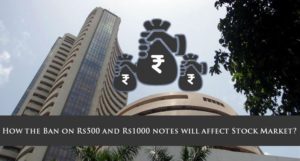
Radical announcements almost always cause hysteria and panic in the stock market, which is well capitalised by seasoned investors. “Sectors like real estate, construction material, unorganised trade and services will see the significant pain in the near term.
With liquidity drying up, both NPA and demand for working capital credit are likely to go up. Because of the bank’s ongoing NPA issues, how fast will banks react to this situation will be interesting to watch. With limited tax arbitrage between organised and unorganised segments, India will see a much sharper move from unorganised to organised segment”, said Amit Sachdev- Co-founder and CEO at CoinTribe.
Banking is set to gain from this action as their deposits will rise exceptionally. In the medium to long-term, as the different sectors and industries will stabilise, stock market too will gain from this decision. This announcement is also going to strengthen the foreign investor’s confidence in the Indian economy.
Impact of this Decision on overall Indian Economy

This will undoubtedly help in cleansing the economy and ascertaining the actual value of money in circulation. The parallel or shadow economy is pegged at over 20% of our GDP. In a medium to long-term, factoring the unaccounted and undeclared money, the government shall have a surplus, and that’ll also appreciate the value of Indian Rupee.
It doesn’t need any unique insight to figure the astronomical taxes, and penalty government will collect from this drive. Also, since a part of the black money and fake money will be flushed out, the economy will be consolidated and detoxed.
Conclusion
This is an extraordinarily bold and timely step taken by the government. This not only addresses the grave issues of black money, corruption and terrorism but also has political repercussions.
With a couple of state assembly elections due in a few months, this is even supposed to change the political equation where cash rules the dynamics in more senses than one.
This will also direct our economy towards cashless transactions since it attaches no merit to the use of cash. Even while the smooth transition takes place, though there’re caps on cash withdrawals there’s no restriction on a cheque, DD, NEFT and other electronic modes. So a lot of users will be nudged to this cashless media too in the interim.
To sum it all up, it’s indeed a right decision with impeccable timing and planning. It will help curtail the fake and black money present in the system. Smooth and efficient execution of the plan is going to be determined by the efficiency of the participants like Banks and Post Offices.
It’s serendipitous that Mr Modi played his “Trump Card” the evening before Mr Trump got elected!
References / Sources: (i) economictimes.indiatimes.com, (ii) news18.com, (iii) firstpost.com, (iv) iimb.ernet.in, (v) gfintegrity.org, (vi) economictimes.indiatimes.com, (vii) thehindubusinessline.com, (viii) economictimes.indiatimes.com
Also Check: How To Identify Real and Fake Rs2000 and Rs500 Currency Notes?
